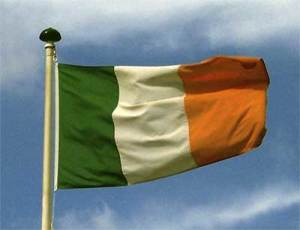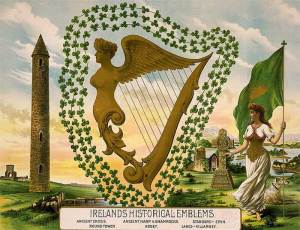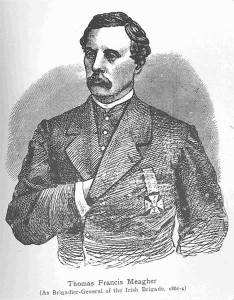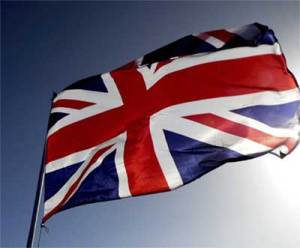Bearin’ of the green – flag, that is | Flag of Ireland
 Next month, people of Irish ancestry – and millions who aren’t – will mark St. Patrick’s Day with parades, songs, the wearin’ of the green…and the bearin’ of the green. Flags, that is, especially the national flag of Ireland.
Next month, people of Irish ancestry – and millions who aren’t – will mark St. Patrick’s Day with parades, songs, the wearin’ of the green…and the bearin’ of the green. Flags, that is, especially the national flag of Ireland.
Ironically, it was born in France.

While the flag looks simple, its three vertical bands of color represent a great deal. According to the website of the government of Ireland (www.gov.ie), “the Irish Tricolour is intended to symbolise the inclusion and hoped-for union of the people of different traditions on this island, which is now expressed in the Constitution as the entitlement of every person born in Ireland to be part of the Irish nation.”
That’s a mouthful, which the banner represents in just three hues – green, white and orange. Those colors were suggested to Ireland by revolutionaries in 19th-century France. In April 1848, Thomas Francis Meagher, an Irish rebel, “brought a tricolour of orange, white and green from Paris and presented it to a Dublin meeting,” says the website. Another rebel enthused, “I hope to see that flag one day waving as our national banner.”
 That day would not arrive for nearly seven decades. In the meantime, Meagher was convicted of sedition and sentenced to death. When that was commuted, he was dispatched to spend his life in Australia. But the resourceful Meagher slipped away and fled to America. He would eventually lead an Irish-American regiment in the Civil War (see last week’s posting).
That day would not arrive for nearly seven decades. In the meantime, Meagher was convicted of sedition and sentenced to death. When that was commuted, he was dispatched to spend his life in Australia. But the resourceful Meagher slipped away and fled to America. He would eventually lead an Irish-American regiment in the Civil War (see last week’s posting).

In 1916, when the Irish rose up again to fight British control, the tricolored banner was waved to represent three ideas: green for the Emerald Island’s Catholics, orange for the northern Protestants (in recognition of William of Orange, one-time king of Great Britain, including Northern Ireland) and white for the peace that would one day unite the sections.
Another two decades passed before Ireland’s liberty was solidified in 1937, and the tricolor was affirmed in the Constitution as the official flag of the Emerald Isle. Its use of orange is a wish for eventual union, but Northern Ireland still remains a British territory.
While America’s national anthem, “The Star-Spangled Banner,” focuses on the U.S. flag, the Irish anthem makes only a passing reference to the tricolor in this stanza: “In valley green, on towering crag,/Our fathers fought before us,/And conquered ‘neath the same old flag/That’s proudly floating o’er us.”
